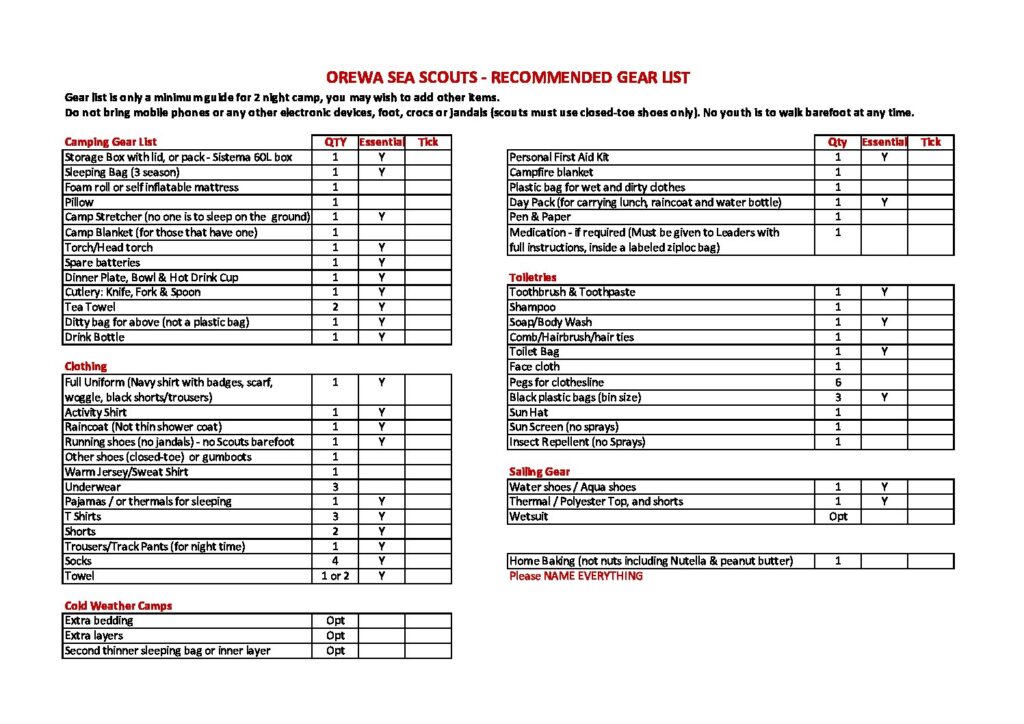Equipment can be built upon as youth move through the different sections. For the packing and maintenance of gear it is important for youth to take a personal responsibility for doing this themselves with parents\guardians checking afterwards if needed. A lot of these items are useful for school camps as well.
Sleeping Gear
For sleepovers and camps youth sleep on stretchers a lot of the time. These need to be off the ground like the type pictured with youth being able to put these up themselves or with a buddy. The ground clearance also enables a gear box to go underneath and keeps the tent tidy. The lower type of stretchers (ones with spring loaded legs or massive folding ones) are not recommended and can be very hazardous. Finally, the sleeping capacity of our larger canvas tents is based around this size of these stretchers.
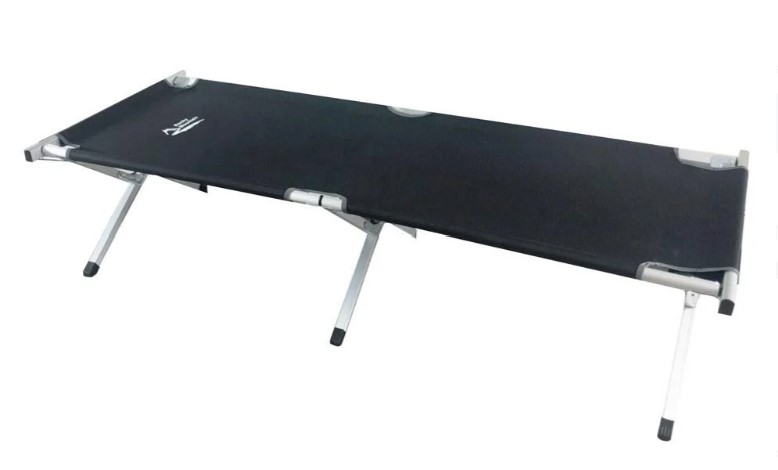
A self inflating air mattress or foam roll is recommended also to go on top of the stretcher. This can also then be used for tramping or mobile camps when youth are using the smaller hike tents.
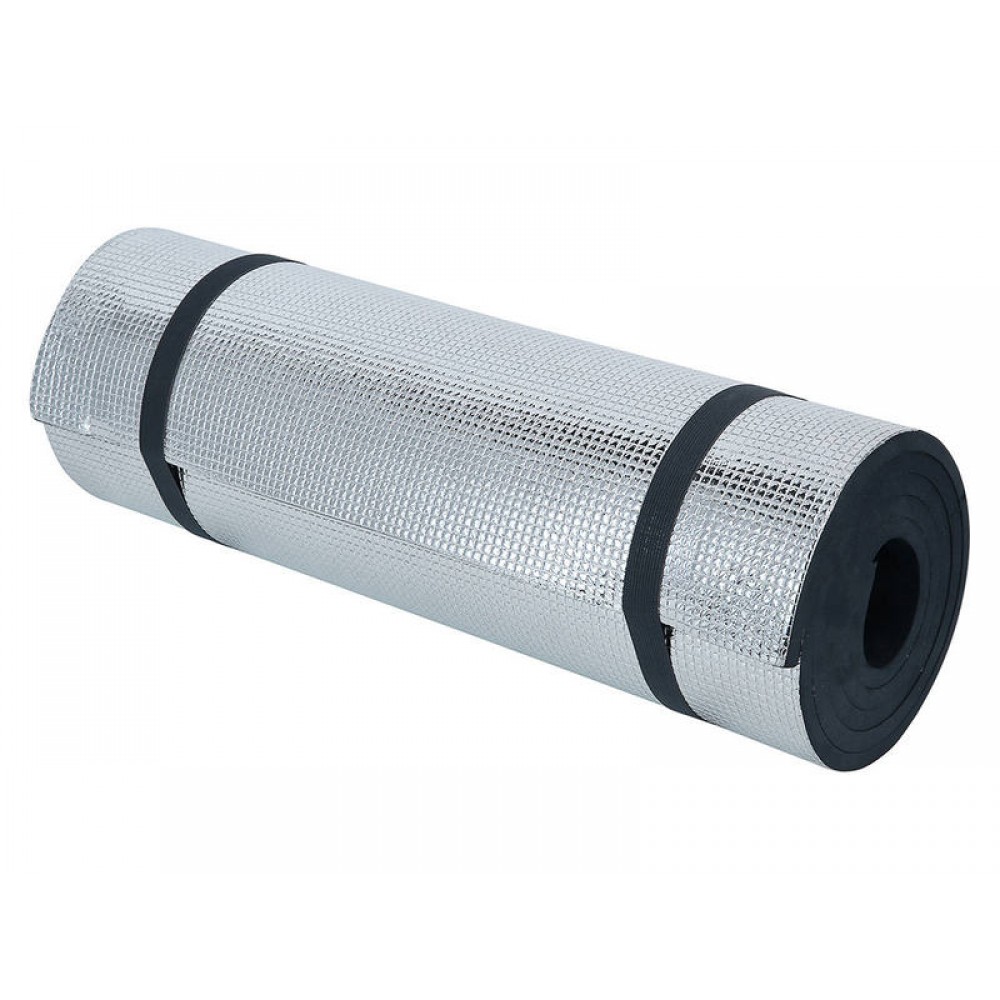
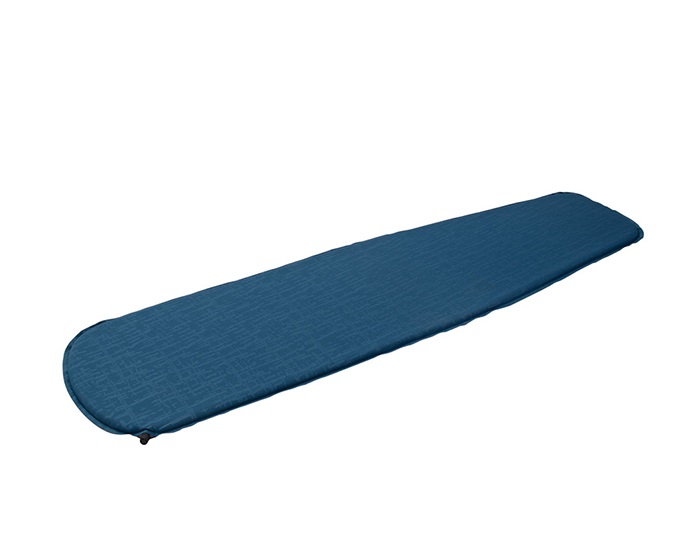
Gear Storage
When advised, and mostly for longer camps and regattas, a 60L lower type of storage box should be used for all personal gear. This should fit and go under the stretcher.
Also when we “Day Mode’ our big canvas tents, to keep them fresh and aired, all gear and stretchers are moved around the tent each morning so having everything in one box greatly aids this. Sometimes the foam roll or sleeping bag may not fit in, so this is fine for this to come into camp initially in another foldup\temporary bag.
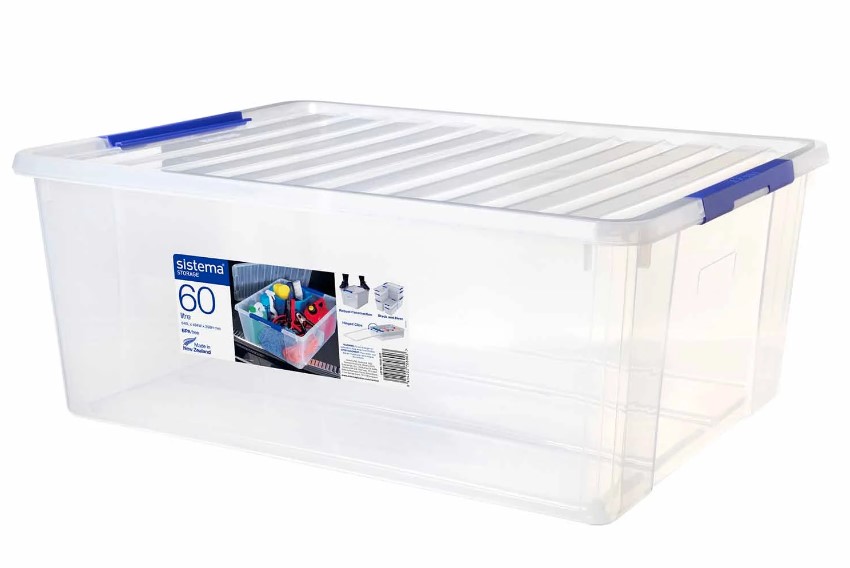
Sleeping bag
A warm sleeping bag is important, particularly for camps outside the summer months. A 3 seasons is the ideal sleeping bag – not the ‘spongebob’ type ones as kids end up getting cold and having a terrible night. Also the risk of hating camps forever and not wanting to spend another night away from home ever again. So please, a proper sleeping bag is key!
You can get these from very many places – generally, the thicker they are, the warmer they are. You can get advice from shops such as Macpac, Kathmandu and Army and Outdoors.
Eating
Youth use Ditty Bags, which is a great project for them to make a custom one at home, but any draw string bag will do. The ditty bag holds cutlery, a plate, a bowl and a mug, for which every piece should be named or initialed.
There should also be a tea towel (ideally two) as on camp youth wash and dry their own dishes, and even the leaders’ ones occasionally. Enamel or metal plates are the best, as cheaper plastic can snap.
The size of the plate, bowl and cup needs to be of a good capacity so youth get a proper portion of food on camp. They will be very hungry after busy camp days so a ‘Paw Patrol’ or ‘Wiggles’ junior size bowl isn’t go to cut it. The mug is in addition to a water bottle, so the water bottle is kept hygienic.
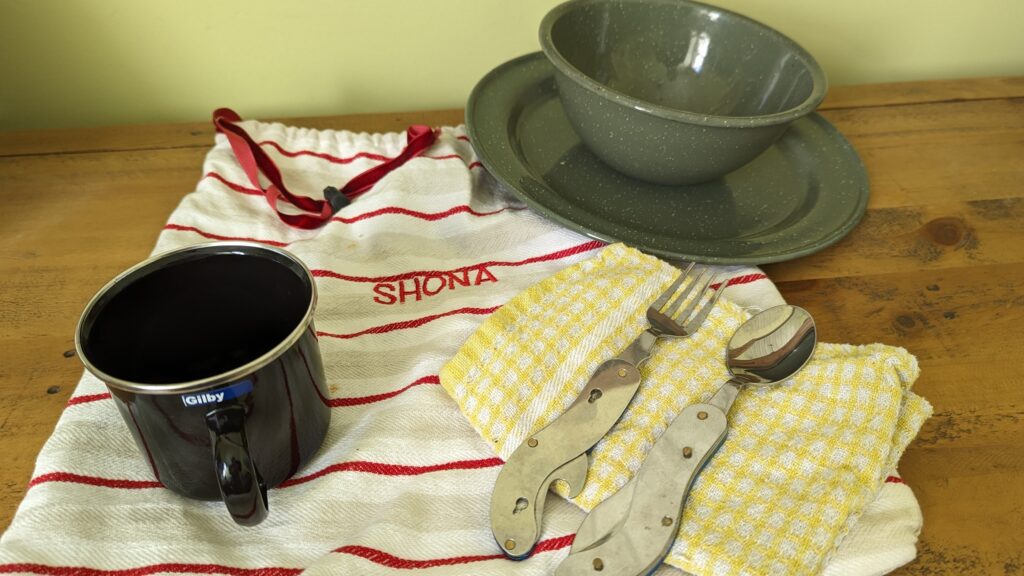
Sailing Gear
Sailing is hard on clothes, so old second hand clothes are fine – it’s not a fashion contest.
- Sun hat or warm hat
- If you have glasses, tie them on
- Sun block – all weathers
- PFD (life jacket) provided by Orewa Sea Scouts
- Wind breaker, or waterproof jacket
- Sailing gloves are nice, but are not really needed for scout sailing
- A cheap warehouse wetsuit is very useful
- Shorts and a wool/thermal shirt (not cotton) if you have no wetsuit
- Cheap polyprops under the wetsuit improve warmth and comfort a lot (not cotton)
- Wetsuit booties are good in cold weather sailing. Otherwise water shoes (never barefoot)
- A complete change of clothes to go home in, and a towel. Scouts get wet in boats, especially during launch and retrieval
- Plastic bag to take home wet gear
- Please label everything! It will help to ensure that we can return items to the correct person if anything gets misplaced
Recommended Gear List
(click the image to open in new tab)
